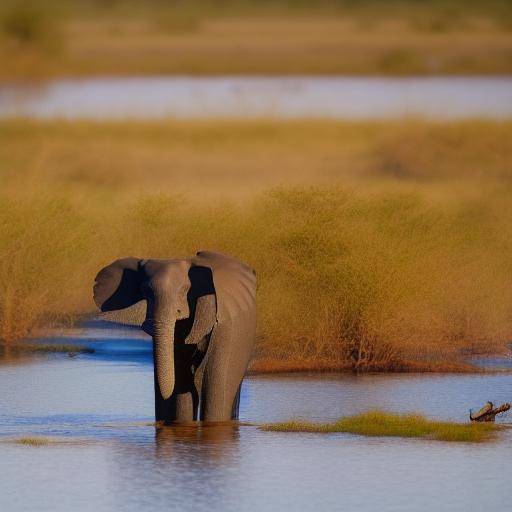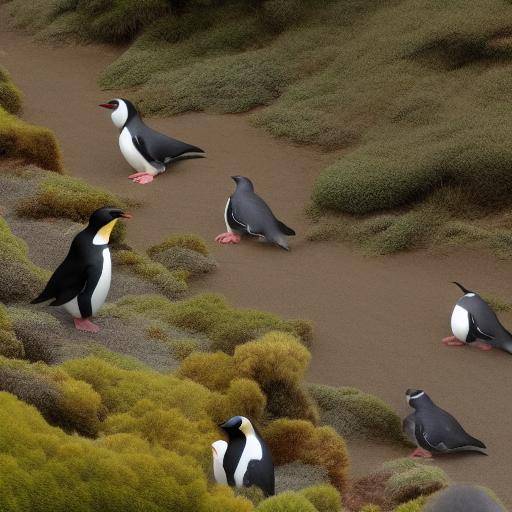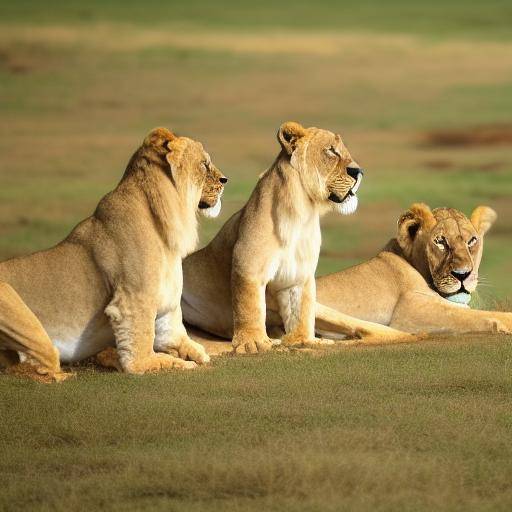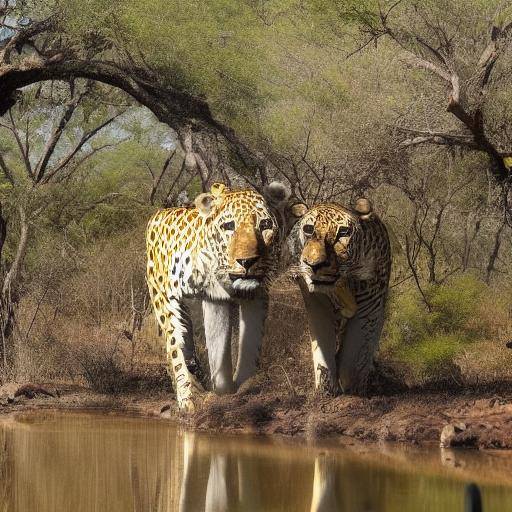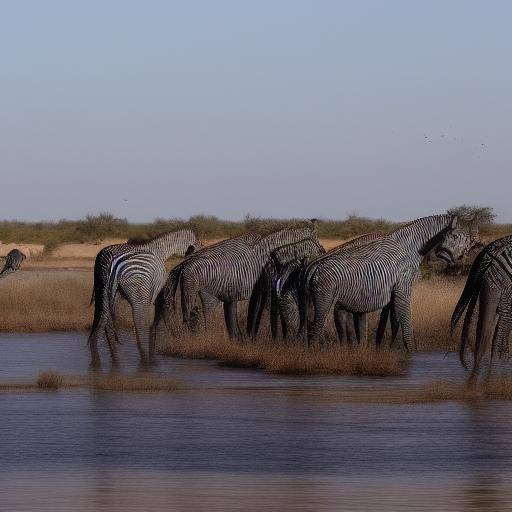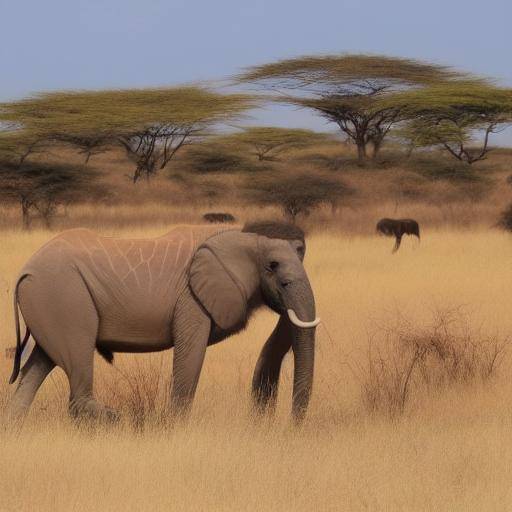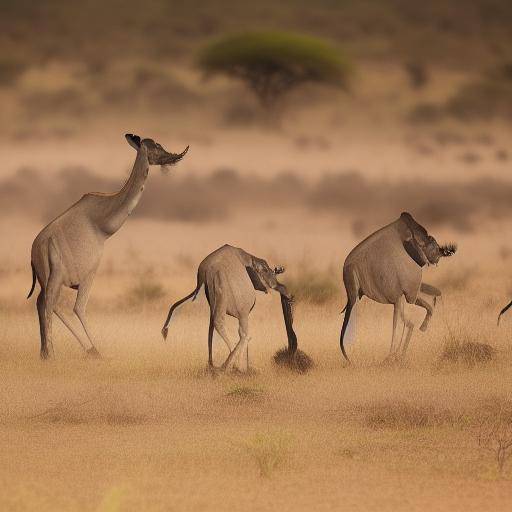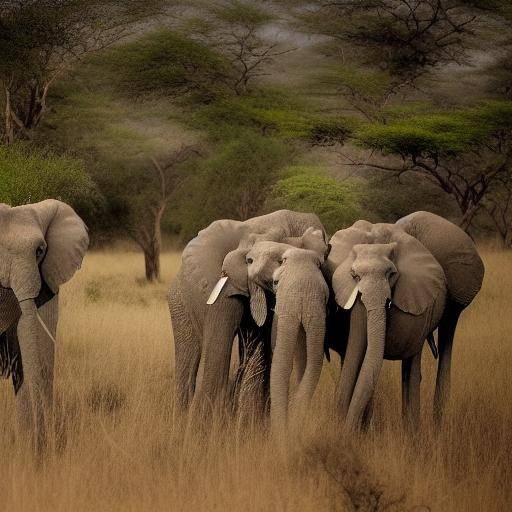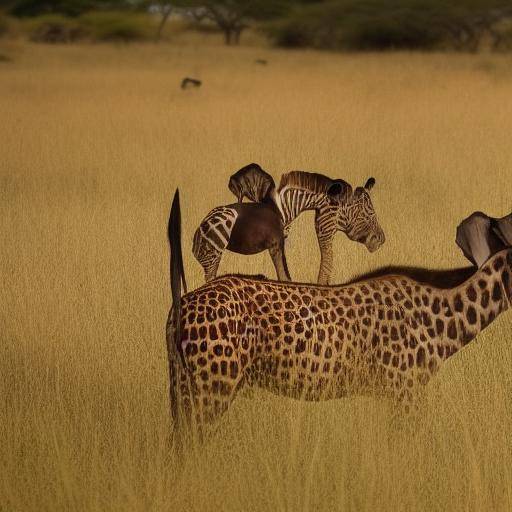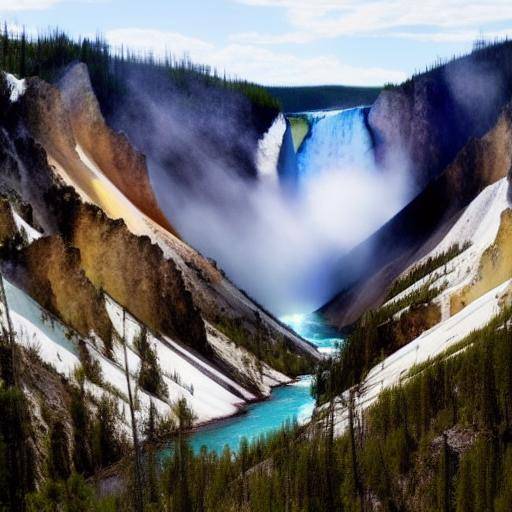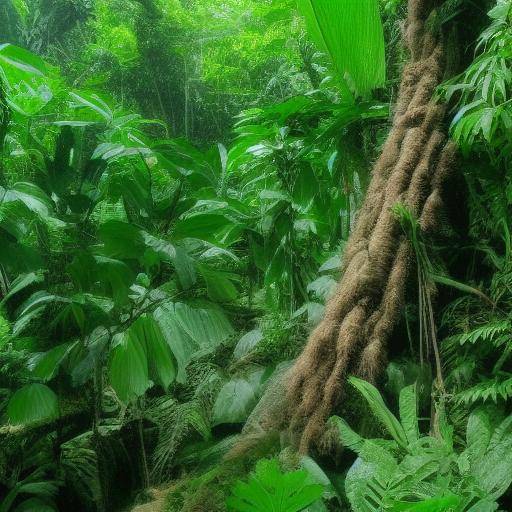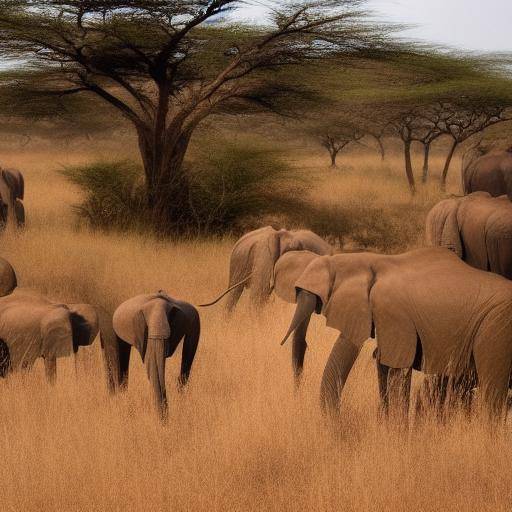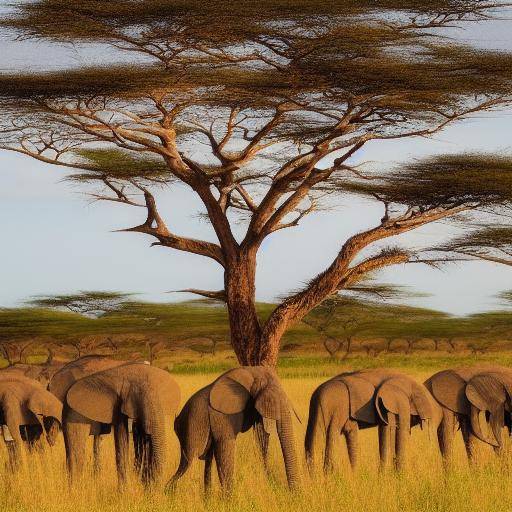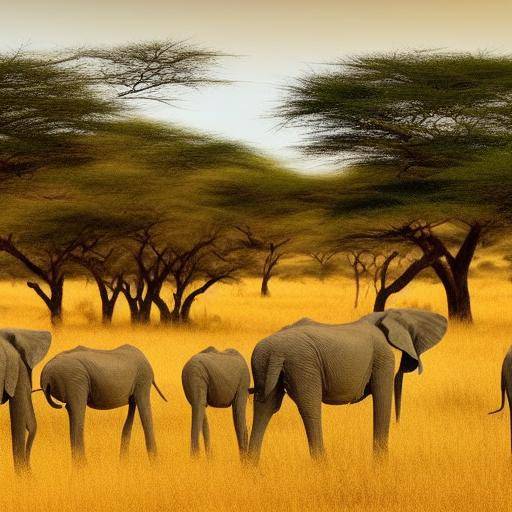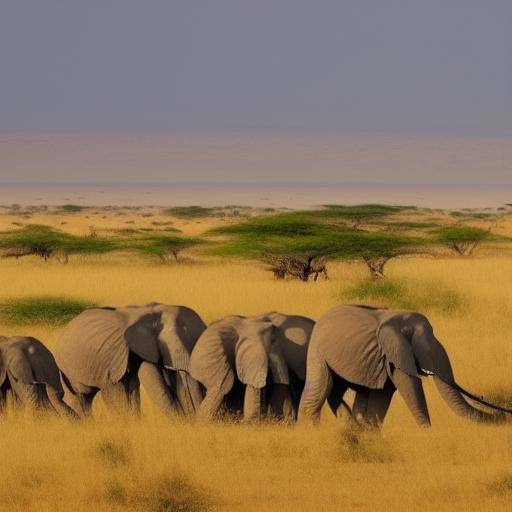
The Serengeti is globally known for its amazing wildlife and iconic safaris. In this article, we will explore in depth this magnificent destination, from its history and meaning to future trends. You will get detailed information about the experience of safari, the wildlife of the region and the different facets of the Serengeti. Prepare to immerse yourself in a virtual journey that will take you through the natural beauty and excitement of exploring wildlife in the Serengeti.
Introduction
The Serengeti, located in Tanzania, is one of the most emblematic destinations for nature and wildlife lovers. With its impressive diversity of flora and fauna, it offers unique experiences in safaris that will remain in the memory of visitors forever. From majestic lions to imposing elephants and the spectacular annual migration of ñus, the Serengeti is truly a paradise for wildlife enthusiasts.
History and Background
The Serengeti has been inhabited by humans since time immemorial, being home to the Masai, one of the best known tribes in Africa. In 1951, the Serengeti National Park was established, with the aim of preserving its vast expanse of wildlife and natural habitats. This milestone marked a significant precedent in the protection of wildlife in Africa and laid the foundation for global conservation.
Later, in 1981, the Serengeti was declared a World Heritage Site by UNESCO, recognizing its importance not only for Tanzania, but for the whole world. This designation has helped to preserve the unique biodiversity of the Serengeti and has fostered sustainable tourism in the region.
Analysis in Deep
Safari tourism in the Serengeti has experienced steady growth in recent decades, attracting travelers from around the world. This boom has generated economic benefits for the region, contributing to the development of infrastructures and conservation programmes.
However, tourism growth has also posed challenges in terms of environmental management and wildlife preservation. The balance between visitor satisfaction and ecosystem conservation requires a careful approach and long-term planning.
Comprehensive review
In the heart of the Serengeti is one of the most impressive natural wonders in the world: the Great Migration. This annual phenomenon, involving millions of animals who travel around the region in search of fresh grasslands, is an unrivalled spectacle that attracts wildlife observers from all over the world.
In addition, the Serengeti hosts an astounding diversity of animals, from the "big five" (leon, leopard, elephant, buffalo and rhino) to exotic birds and small mammals. The safaris in the Serengeti offer visitors the opportunity to witness this rich variety of wildlife in their natural environment, providing unforgettable experiences and deep connections with nature.
Comparative analysis
By comparing the safari in the Serengeti with other wildlife experiences in the world, it is evident that its uniqueness lies in the combination of stunning landscapes and exceptional biodiversity. Unlike other destinations, the Serengeti offers the opportunity to witness the unrivalled Great Migration, a natural phenomenon that few places on the planet can match.
Practical Tips and Accessible Tips
If you are planning a safari in the Serengeti, it is essential to have an experienced guide that knows the region and its habitats in depth. In addition, it is important to respect deconservation standards and behave responsibly to minimize the impact on wildlife and its environment. It is also advisable to wear observation equipment, such as binoculars and cameras, to capture the memorable moments you will surely experience in your safari.
Industry ideas and Expert Reviews
Conservation and wildlife experts emphasize the importance of addressing tourism in the Serengeti with a sustainable and balanced approach. Current decisions will impact the long-term survival of species and the natural environment, so it is crucial to consider conservation as an integral part of tourism development.
Case Studies and Real Life Applications
Reviewing success stories in tourism management and conservation in the Serengeti offers valuable lessons on effective practices and innovative approaches. Collaboration between local communities, government authorities and conservation organizations has proved to be crucial in ensuring the balance between tourism and the preservation of wildlife.
Future Trends and Predictions
As global tourism evolves, future trends in the Serengeti safari aim at an increasingly focused approach to sustainability and responsible tourism. Travelers are expected to seek genuine and meaningful experiences that respect and protect the biodiversity of Serengeti, thus fostering a tourism model that benefits both local communities and wildlife.
Conclusion
The safari in the Serengeti offers an intimate connection with nature, challenging and enriching visitors in unimaginable ways. The opportunity to witness the magnificence of wildlife in its natural habitat is an incomparable gift that deserves to be protected and valued. By committing ourselves to responsible tourism, we have the capacity to safeguard the beauty of Serengeti for future generations. Dive into this unique experience and discover the magic of wildlife in the Serengeti.
Frequently asked questions
What is the best time of the year to make a safari in the Serengeti?
The annual migration of luus and zebras is an extraordinary show that occurs between June and September, so this period is ideal to witness this unique event. However, every season has its own particularities, so the best time can vary according to individual preferences.
What are the safety precautions to be considered when making a safari in the Serengeti?
It is essential to follow the guidelines and to maintain a safe distance from wildlife. Respecting conservation standards and acting responsibly will contribute to ensuring a safe experience for all.
What is the typical duration of a safari in the Serengeti?
The duration may vary, but many safaris in the Serengeti last several days to allow a complete immersion in the wild life and the different habitats of the region.
What type of accommodation is available in the Serengeti?
From luxurious lodges to simpler camps, the Serengeti offers a wide range of accommodation options that adapt to different preferences and budgets.
What is the importance of supporting sustainable tourism in the Serengeti?
Sustainable tourism ensures that future generations can enjoy the natural beauty of the Serengeti. It also contributes to the well-being of local communities and wildlife conservation.
How can I contribute to the conservation of Serengeti?
In addition to participating in responsible tourism, you can support local conservation organizations, educate yourself about wildlife and share your passion for the Serengeti to raise awareness about its importance.
Conclusion
The Serengeti is a natural treasure that transcends the imagination, offering to those who visit it an incomparable experience. From the majesty of its landscapes to the amazing diversity of its wildlife, Serengeti is a reminder of the beauty and fragility of our planet. In exploring this impressive destination, we are reminded of the importance of preserving and protecting the natural treasures of our world for generations to come. immerse yourself in the wonder of the Serengeti and discover the grandeur of wildlife in its most pristine state.
With this complete guide, you are prepared to enjoy your safari at the Serengeti and experience the magic of wildlife in its natural environment.
This article has provided detailed information about Serengeti, safari and wildlife, covering from its history and meaning to future trends. We hope that this guide has prepared you to enjoy and fully appreciate the magnificence of the Serengeti, as well as to understand the importance of protecting and preserving this unique ecosystem.
With this comprehensive guide, you are prepared to immerse yourself in the wonder of Serengeti and discover the grandeur of wildlife in its most pristine state.
Remember, the Serengeti reminds us of the importance of preserving and protecting the natural treasures of our world for future generations. Enjoy your safari!
With this article, you have acquired detailed knowledge about Serengeti, safari and wildlife, which will prepare you to enjoy this magnificent experience. Let us explore together the greatness and natural beauty of Serengeti as we learn to preserve and protect its valuable ecosystem for future generations.
We hope this guide has provided you with the information necessary to make your safari in the Serengeti an unforgettable experience. Enjoy the grandeur of wildlife in its natural environment!
FAQs
What is the best time to visit the Serengeti?
The best time to visit the Serengeti depends on your interests. If you want to witness the Great Migration, the months from July to October are ideal. If you prefer to avoid crowds and enjoy green landscapes, consider January to February.
Is any type of vaccine or medical precaution required to visit the Serengeti?
It is advisable to consult with a medical professional for up-to-date information on vaccines and prevention measures. Common vaccines include yellow, typhoid, and anti-palúdic prophylaxis.
How many days is recommended for a safari in the Serengeti?
The recommended duration for a safari in the Serengeti is usually at least three days to explore different areas of the park and have the opportunity to witness various wildlife activities.
What type of accommodation is offered in the Serengeti?
From luxurious lodges to mobile camps, the Serengeti has a wide range of accommodation options that adapt to different budgets and preferences.
What additional activities can be performed during a safari in the Serengeti?
In addition to the safaris in vehicles, walks are offered, bird watching, air balloon excursions and visits to local communities to get a more complete view of the region.
How does tourism contribute to the Serengeti and local communities?
Sustainable and responsible tourism can provide vital income to local communities, promote environmental conservation and promote the preservation of wildlife, and raise awareness of the importance of the Serengeti ecosystem.
With these frequent questions, we hope to have cleared the most common doubts and provided a deeper understanding of everything you need to know to enjoy your safari at the Serengeti.
With these frequent questions, we hope to have clarified the most common questions and provided a deeper understanding of everything you need to know to enjoy your safari at the Serengeti.



